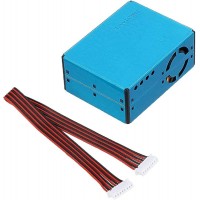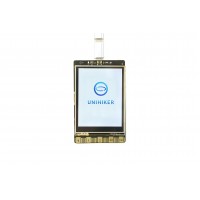|
In lot of embedded systems microcontrollers needs to take analog input. Most of the sensors & transducers such as temperature, humidity, pressure, are analog. For interfacing these sensors to microcontrollers we require to convert the analog output of these sensors to digital so that the controller can read it. Some microcontrollers have built in Analog to Digital Convertor (ADC) so there is no need of external ADC. For microcontrollers that don’t have internal ADC external ADC is used. |
|||||||||
|
One of the most commonly used ADC is ADC0808. ADC 0808 is a Successive approximation type with 8 channels i.e. it can directly access 8 single ended analog signals. |
|||||||||
| I/O Pins | |||||||||
|
ADDRESS LINE A, B, C The device contains 8-channels. A particular channel is selected by using the address decoder line. The TABLE 1 shows the input states for address lines to select any channel. |
|
||||||||
|
Address Latch Enable ALE The address is latched on the Low – High transition of ALE. |
|||||||||
|
START The ADC’s Successive Approximation Register (SAR) is reset on the positive edge i.e. Low- High of the Start Conversion pulse. Whereas the conversion is begun on the falling edge i.e. High – Low of the pulse. |
|||||||||
|
Output Enable Whenever data has to be read from the ADC, Output Enable pin has to be pulled high thus enabling the TRI-STATE outputs, allowing data to be read from the data pins D0-D7. |
|||||||||
|
End of Conversion (EOC) This Pin becomes High when the conversion has ended, so the controller comes to know that the data can now be read from the data pins. |
|||||||||
|
Clock External clock pulses are to be given to the ADC; this can be given either from LM 555 in Astable mode or the controller can also be used to give the pulses. |
|||||||||
| ALGORITHM | |||||||||
| 1. Start. | |||||||||
| 2. Select the channel. | |||||||||
| 3. A Low – High transition on ALE to latch in the address. | |||||||||
| 4. A Low – High transition on Start to reset the ADC’s SAR. | |||||||||
| 5. A High – Low transition on ALE. | |||||||||
| 6. A High – Low transition on start to start the conversion. | |||||||||
| 7. Wait for End of cycle (EOC) pin to become high. | |||||||||
| 8. Make Output Enable pin High. | |||||||||
| 9. Take Data from the ADC’s output | |||||||||
| 10. Make Output Enable pin Low. | |||||||||
| 11. Stop | |||||||||
|
The total numbers of lines required are: data lines: 8 |
|
||||||||
|
I.e. total 12 lines. You can directly connect the OE pin to Vcc. Moreover instead of polling for EOC just put some delay so instead of 12 lines you will require 10 lines. You can also provide the clock through the controller thus eliminating the need of external circuit for clock. |
|||||||||
|
Calculating Step Size |
|||||||||
|
ADC 0808 is an 8 bit ADC i.e. it divides the voltage applied at Vref+ & Vref- into 28 i.e. 256 steps. Step Size = (Vref+ - Vref-)/256 Suppose Vref+ is connected to Vcc i.e. 5V & Vref- is connected to the Gnd then the step size will be Step size= (5 - 0)/256= 19.53 mv. |
|||||||||
|
Calculating Dout. |
|||||||||
| The data we get at the D0 - D7 depends upon the step size & the Input voltage i.e. Vin.
Dout = Vin /step Size. If you want to interface sensors like LM35 which has output 10mv/°C then I would suggest that you set the Vref+ to 2.56v so that the step size will be Step size= (2.56 - 0)/256= 10 mv. So now whatever reading that you get from the ADC will be equal to the actual temperature. |
|||||||||
|
PROGRAM |
|||||||||
|
Here is a program for interfacing the ADC to microcontroller, as stated above I have assumed that the OE pin is connected to Vcc & the clock is given by the controller. This program selects channel 0 as input channel reads from it & saves in the accumulator.
|
|||||||||
|
|||||||||
-




